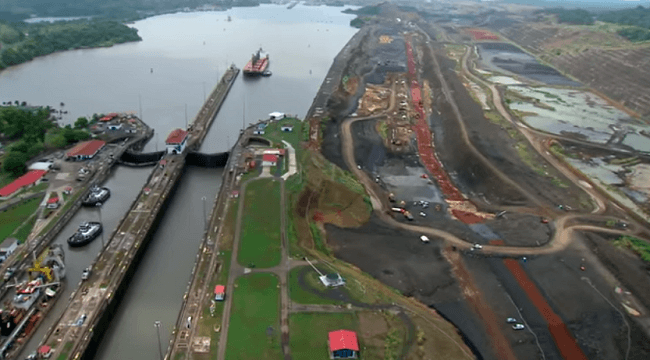The Panama Canal Expansion Project and Its Benefits to the Shipping Industry
The Panama Canal is one of the busiest water ways in the maritime world which sees huge ship traffic every day. It is also one of the ten Council International Maritime Organization (IMO) members with greater interest in providing international shipping services which is up to 6% of world commerce.
With the rise of international maritime commerce, trade liberalization with increased trading volumes and containerization, shipping lines have been keener in investing more funds in vessels and ports to comply with the needs and demand growths. Panama Canal due to its less capacity has been facing several problems related to ship traffic congestion.
The Panama Canal although holds a strong ground in maritime trading, has been losing market share to other trade routes like the Suez Canal, as the former was not capable of accommodating vessels of capacity greater than 5,000 TEU’s (20’ equivalent units). Other limitations that the canal faces were:
- Lack in growth of transit demand
- Outdated canal structure
- Early saturation point
- Inability to divert traffic to potentially longer alternative routes
- Unsustainable development
- Lagging in maritime industry trend for the world’s commerce
Hence the proposal by Panama Canal Authority (Autoridad del Canal de Panamá or ACP) for the Panama Canal expansion was significant for the shipping industry in regards of doubling the capacity by 2014 and allowing larger ships to transit.
The Panama Canal Expansion programme components include
- Deepening & widening of the Atlantic Entrance
- Constructing Atlantic Post Panamax Locks
- Increasing the Maximum Operating Level of Gatun Lake
- Deepening & widening of the Gatun Lake & Culebra Cut navigational channels
- Excavating Post Panamax Pacific Locks Access Channel
- Constructing Pacific Post Panamax Locks
- Deepening & widening of the Pacific entrance
Panama Canal expansion and its benefits
The Panama Canal expansion project would largely decrease the instances of bottlenecks, lower the average transit times by rendering raised capacity and allow for transit of Post-Panamax vessels. The proposed plan for widening and deepening and excavating is supposed to increase the capacity to 42 vessels per day, which could even be extended to 51 vessels per day by 2020. By widening the Gaillard Cut, increasing the locomotive fleet from 80 to 100 units, and acquiring more robust tugs the average canal waters time could be significantly reduced.
Increased daily transits, faster transit times and allowance of more tonnage would also make way for increasing toll revenue. Given its level of cost effectiveness, international shippers and traders would be more enthusiastic about choosing the Panama Canal instead of the multimodal route, the Cape Horn Route, or the Suez Canal for transporting goods by large cargo vessels. With an estimated annual growth of container cargo commerce of 8.4%, the Panama Canal expansion and its augmented demand for the trade route, would inevitably contribute to the increased economic activity.
The total approximated $5.25 billion plan would also affect U.S. exports as the transit costs will be cheaper, as mentioned by U.S. Ambassador William Eaton. The expansion project would also furnish greater access for Latin Americans to the Pacific region whereas Asians would be drawn closer to the Atlantic.
The Panama route enhances environmental contribution by reducing GHG emissions on the planet with more efficient transport, reducing fuel consumption per cargo unit and fewer emissions than other routes that combine transportation by land.
The Panama Canal has an enormous commitment and a great social and economic responsibility towards the nations as much as it has to remain the vanguard of development in the maritime world in sustainable growth and ensure its operations comply with highest environmental standards. The Panama Canal expansion project would inevitably allow it to offer the safest, cost and time effective, reliable and efficient services for the world’s commerce and economical benefit, in view of the preeminent world cargo growth.
You might also like to read-What are Deep Water Ports?
4th Engineer’s First Journey Through The Panama Canal
Do you have info to share with us ? Suggest a correction
Latest Maritime Knowledge Articles You Would Like:
Subscribe To Our Newsletters
By subscribing, you agree to our Privacy Policy and may receive occasional deal communications; you can unsubscribe anytime.
Web Stories





















